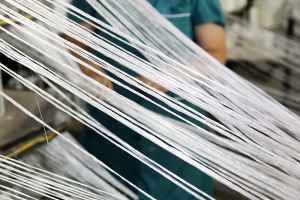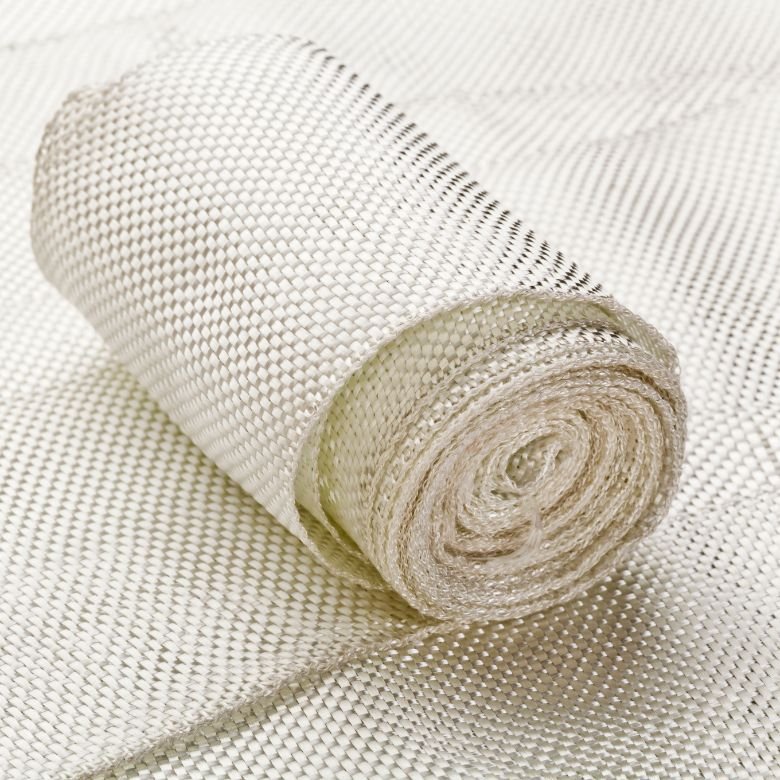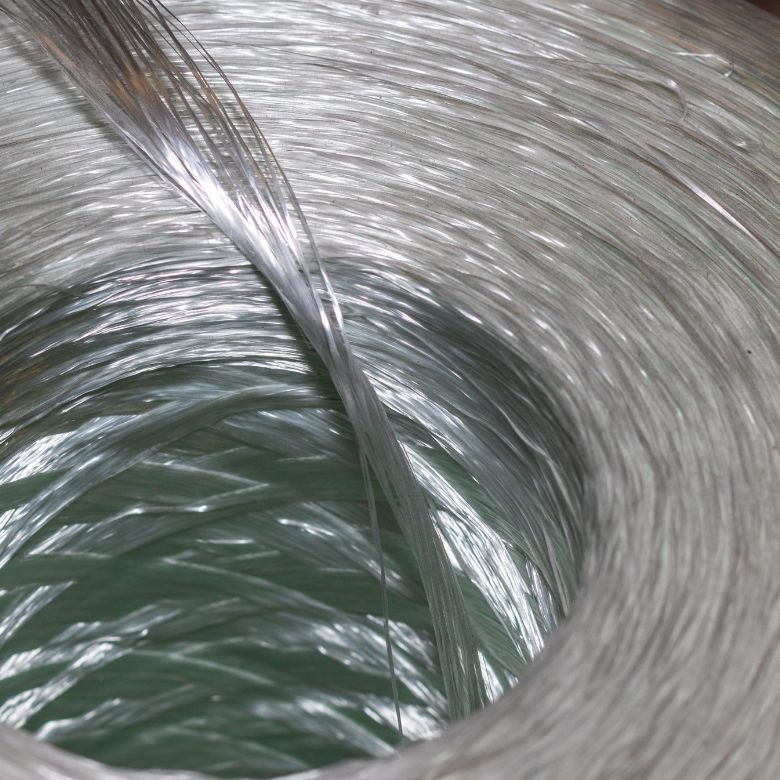Fibreglass is a key material in many industrial sectors. Its unique properties and wide range of applications mean that it often proves irreplaceable. In this post, we are taking a closer look at what fibreglass is, its characteristics and ways of using it effectively. Read on and find out!

What is fibreglass?
What is the simplest answer to the question: what is fibreglass? It is a chemical fibre, formed by melting and stretching water glass. It is exceptionally durable and light at the same time. There are many types of it, with the general-purpose fibre being E-type glass.
To put it very simply, fibreglass is created as a result of a process that begins with melting the glass raw material. The molten glass is then extruded through special nozzles, creating thin streams that cool quickly and transform into fine fibres. The fibres can be further processed into various forms.
To some, this material may bring to mind fibre optic technology, but this is just one of its many possible applications. We will discuss those in more detail further down the article.
What are the properties of fibreglass?
Fibreglass has a number of unique properties that are worth considering when planning to use that material:
- tensile strength: it is exceptionally resistant to stretching, surpassing many traditional materials in that area,
- corrosion resistance: it does not corrode, which makes it ideal for use in humid or chemical environments,
- thermal and electrical insulation: it perfectly isolates heat and electricity, which is crucial in many industrial applications,
- lightweight: the lightness of the material makes it easy to transport and install.
Attention should also be paid to such aspects as hydrophobicity, heat resistance, abrasion and fire resistance.

Fibreglass – applications
Fibreglass, thanks to its unique properties, is widely used in various areas of industry and everyday life. Here are some specific examples for the construction industry:
- fibreglass wallpaper: used to strengthen walls and ceilings, providing additional protection against cracks and fire,
- fibreglass mesh: used to reinforce plaster and prevent cracking, especially in places exposed to structural movements,
- fibreglass boards: used as wall panels resistant to difficult conditions, ideal for use in rooms with high humidity,
- fibreglass mat: popular in construction and other industries for thermal and acoustic insulation.
However, it’s only the tip of the iceberg. In the automotive and aviation industries, for example, fibreglass composites play an important role in the production of car parts and aircraft structural components. Fibreglass rods are used in the manufacture of sports equipment, such as hockey sticks or bows, because of their flexibility and strength.
The bodies of boats and yachts are also made of that material, which ensures their durability and resistance to weather conditions. In the energy industry, fibreglass pipes are used to transport liquids and gases, due to their resistance to corrosion and high pressure.
When discussing fibreglass applications, one cannot fail to mention fibre optic technology. Optical fibre – a revolution in data transmission technology; it is nothing more than a special cable consisting of a jacket, protective coating and core. From the perspective of the discussed topic, the last element is the most relevant.
The core of optical fibres is made of carefully selected glass fibre. Those types of cables are used to, e.g., provide high-speed Internet access to companies, institutions and individual people. They also play an important role in medicine – they allow even more accurate diagnostic imaging and are commonly used for examinations, endoscopic and laparoscopic procedures.

How to use fibreglass?
The use of fibreglass requires specialist knowledge and techniques. A high level of safety must be guaranteed, especially when cutting and joining. If in any doubt, it is worth asking an expert how to use fibreglass of a particular type and in a particular case.
This will help to avoid a situation where the full potential of fibreglass is not exploited due to the application of unsuitable methods (e.g. in the case of fibreglass wallpaper, it is important to properly prepare the surface and use the right adhesives).
What are the advantages of fibreglass?
Fibreglass has many advantages, which have already been partially explained in the description of the properties and applications of that material. Key aspects worth paying attention to are, in particular:
- durability: it is a long-lasting material and therefore economical,
- flexibility: it can be formed into a wide variety of shapes, thus the following options are available, e.g.: meshes and the already mentioned fibreglass rods,
- weather resistance: ideal for outdoor use,
- costs: given its capabilities and properties, it is a relatively inexpensive material.
The low cost of fibreglass production, and therefore its attractive price, is associated with a relatively simple manufacturing process. Referring to the issue already discussed in our blog – what glass recycling is and how it can be reused – it is worth mentioning that glass fibre is produced from, e.g., recycled glass aggregates.
Where to buy fibreglass?
Much depends on the form in which we want to buy it. Whether we want to purchase the material in a form for processing, a finished product (e.g. fibreglass mesh) or raw materials or semi-finished products that can be used to produce the fibre or its components. In the offer of the PPC Group, you will find many products from the latter category such as silicon tetrachloride. We encourage you to have a look at the offer, which is available on the Product Portal.
- https://inzynieria.com/inzbezwykopowa/cipp/artykuly/58261,rodzaje-wlokien-szklanych-i-ich-zastosowanie-w-wykladzinach-cipp,wlasciwosci-fizyczne-i-mechaniczne-szkla
- https://cen.acs.org/materials/inorganic-chemistry/s-fiberglass-does-delicate-material/96/i38
- https://www.thoughtco.com/what-is-fiberglass-or-glass-fiber-820469
- https://www.sciencedirect.com/science/article/pii/S2214785320357618
- Leszek A. Dobrzański, Podstawy nauki o materiałach i metaloznawstwo, 2002.
- Mayer, Rayner M. (1993). Design with reinforced plastics. Springer. p. 7.